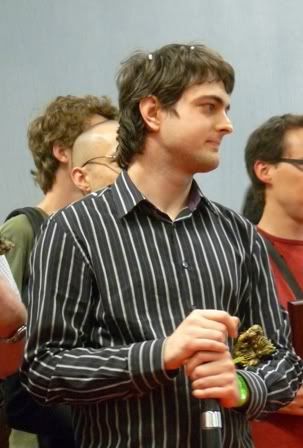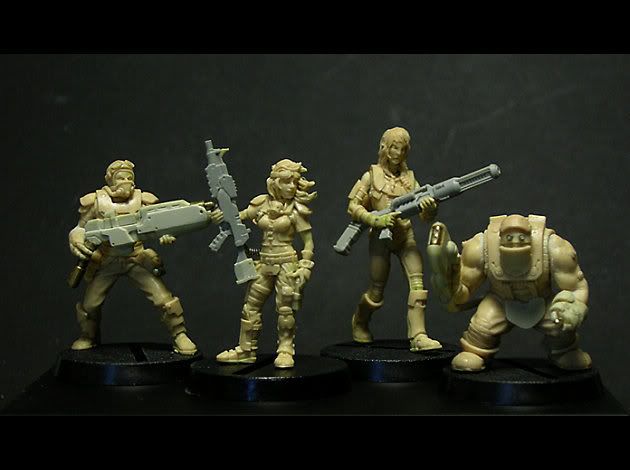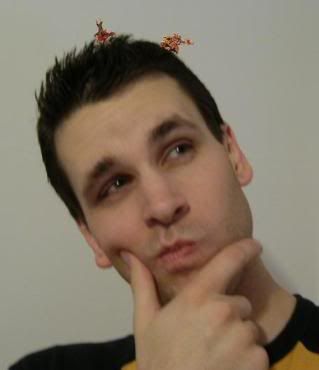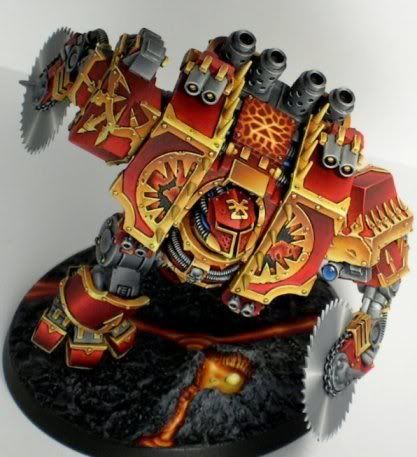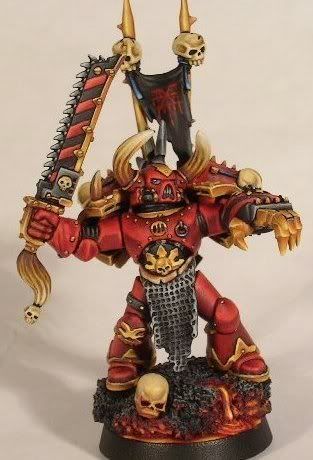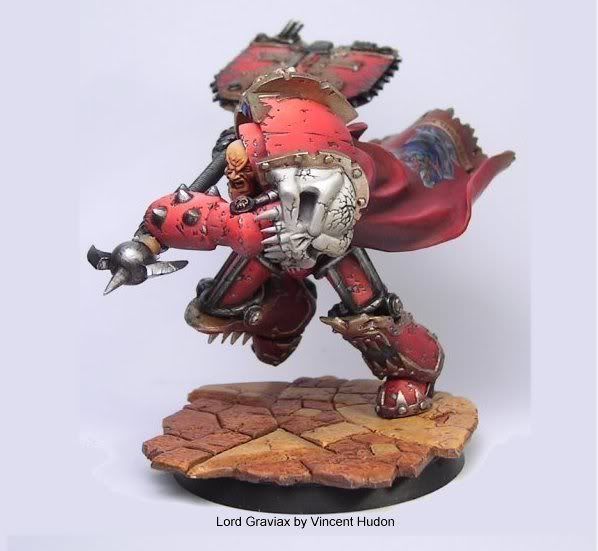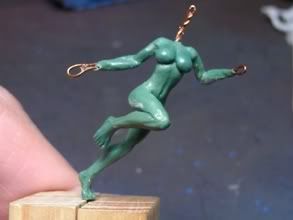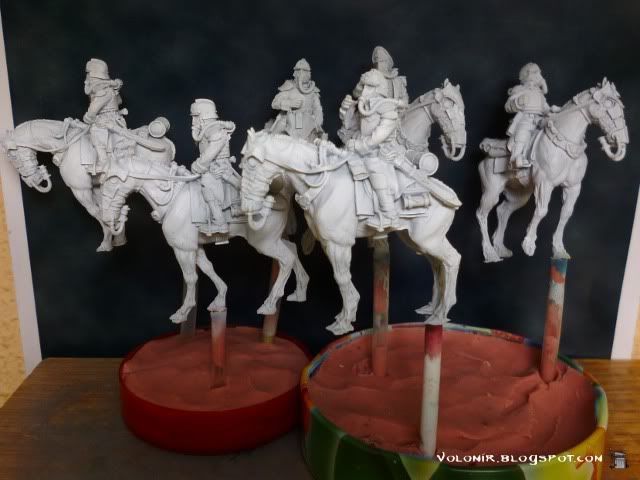Today I start this WIP series of articles about the painting of this Artscale Imperial Fist created by Simon (
Master of the Forge).
It is an Imperial Fist, so I will be painting him in a scheme based in yellow and black. It is a Deathwatch space marine, somehow related to the Inquisition, thus the symbol on the left shoulderpad. This will be the chosen colour scheme:

Yellow is a difficult colour to deal with so I think this is a very interesting process where you can see how I deal with it.
First of all, white priming with Gunze Sangyo flat white with an airbrush. The perfect way to prime in my opinion.

Now, first coat of sunburst yellow, the middle tone, by airbrush. I will be using the tecnique we call "reserving the lights". This means I will give this first base of yellow but not as a uniform coat all over the miniature. Instead, I will paint everything except the areas which will be in light, leaving the white coat which is underneath. This is based on the fact that lighter colours always cover better over other light colours, so I will get a brighter finish if I just paint lights over pure white instead of over a coat of the middle tone (base colour).




And after this, I'll start the shadowing process on the yellow, airbrush again. First, adding a bit of bestial brown to the yellow base.
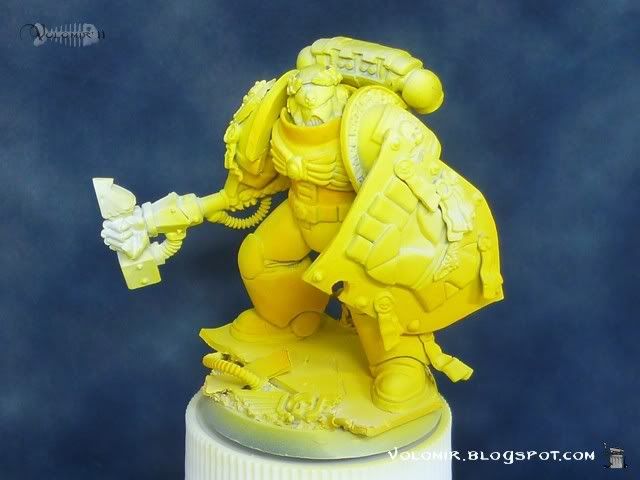
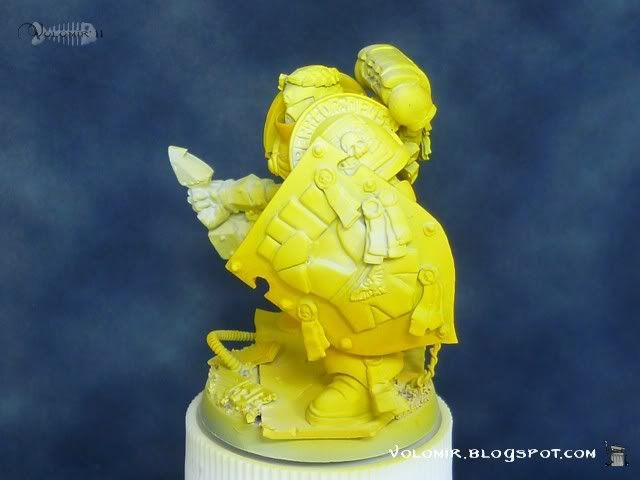

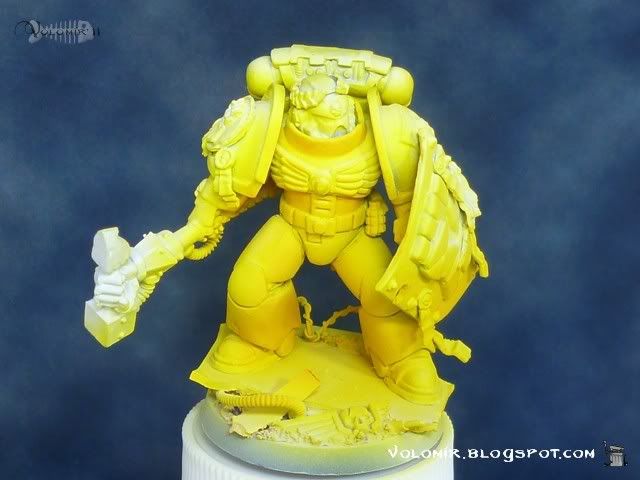
Second shadows with more bestial brown.

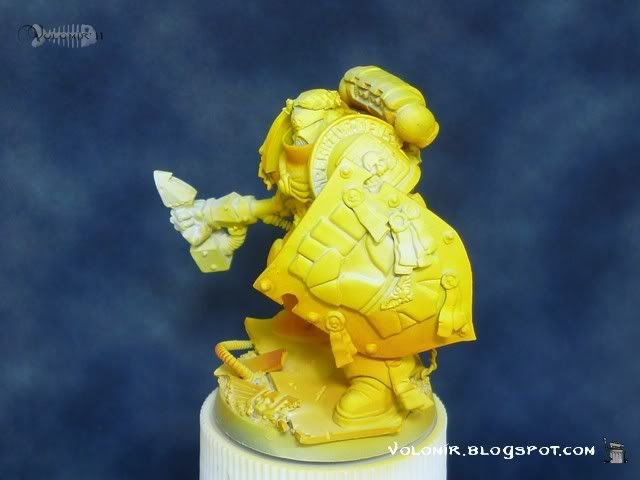
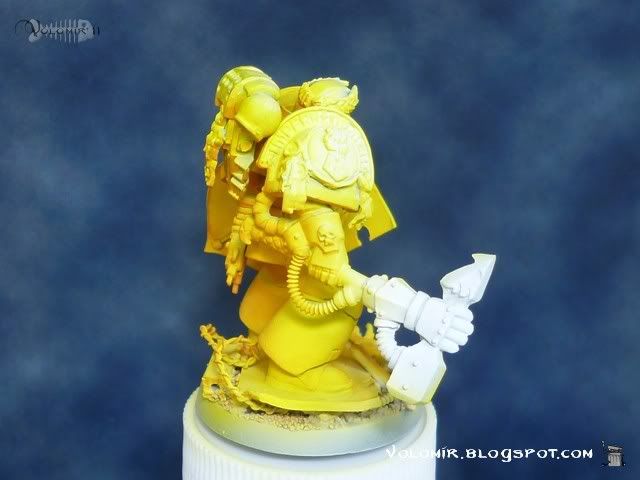
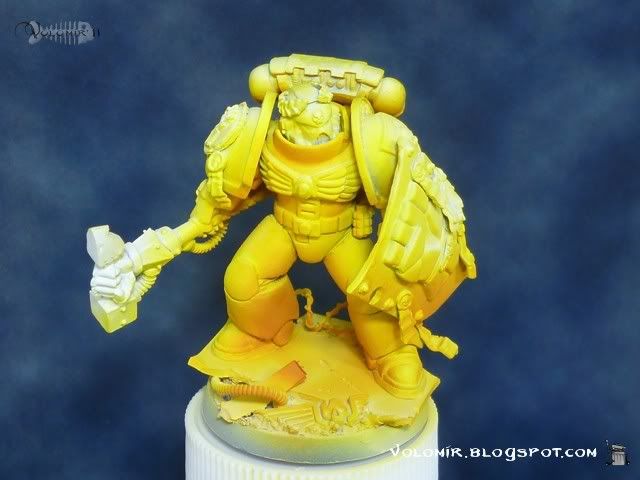
Last shadows with bestial brown adding a little bit of blue, but not too much.
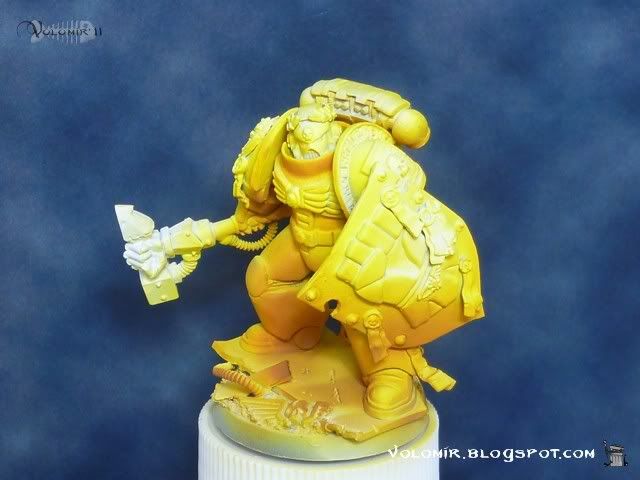
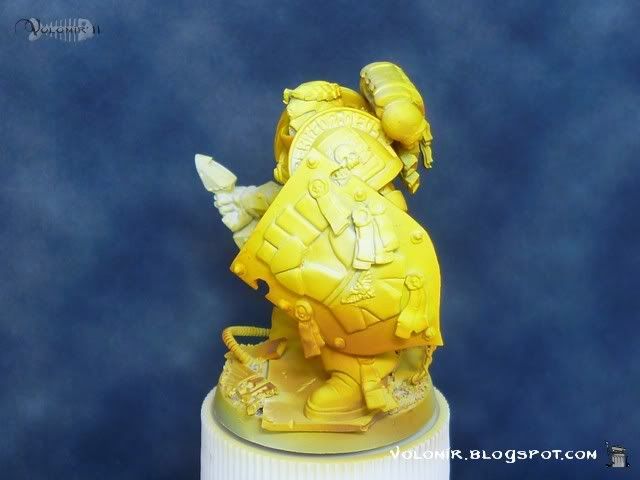
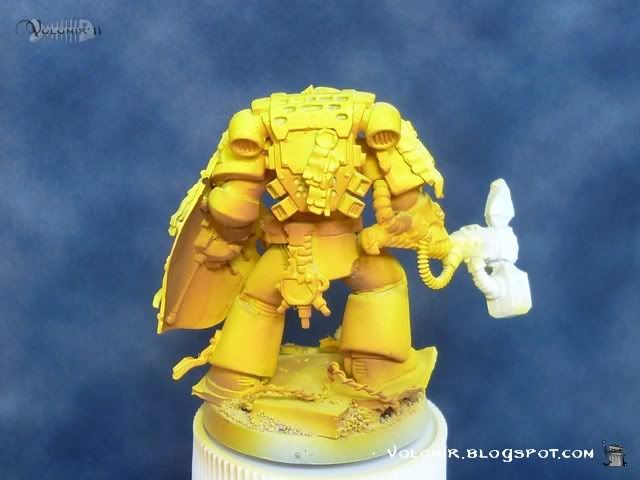
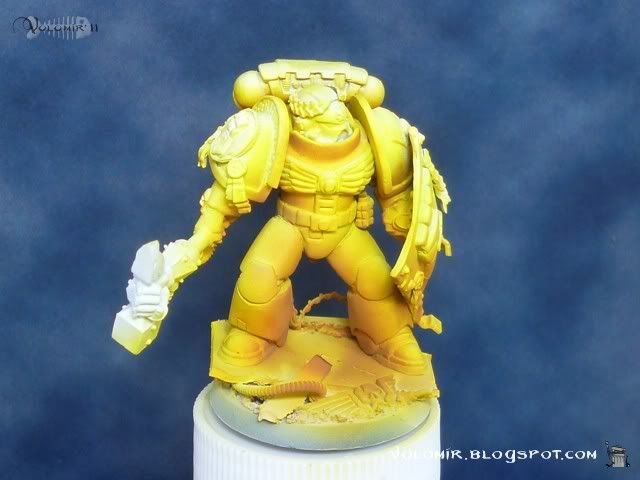
Once I'm satisfied with the overall yellow, I start working on the shield. Even if I am not satisfied entirely with the yellow, I would reccommend passing on to something else, because once the surrounding areas start getting some colour, we will probably see things differently. I want to paint the fist in the shield, in black colours. As it is a big surface, I'll use the airbrush again. So first of all, I'll mask the areas I don't want to paint, with masking tape and also liquid mask for the most difficult parts to mask.

I'll paint the black starting on the lightest colour and then going down progressively to the shadows. Again, this is because I find easier to paint lighter colours over white than over dark colours. So, airbrush in the lightest colour of black, which would be a mid grey to which I'll add a bit of sunburst yellow to ensure coherency with the rest of the miniature.

Adding some black to the mix, next step. This would be our base tone for the black.

Final shadows with pure black. I'll add a bit of blue to certain areas, with the normal brush, so that I add depth to the black.

And now I'll take the masks off.

Leaving the airbrush apart, I'll give black to the parts that will be in that colour. In this step I even give lights and shadows to the blacks in the chest eagle, with the same colour scheme I used in the fist of the shield.



And that's it for today. Stay tuned!
WIP Artscale Imperial Fist part 2




























